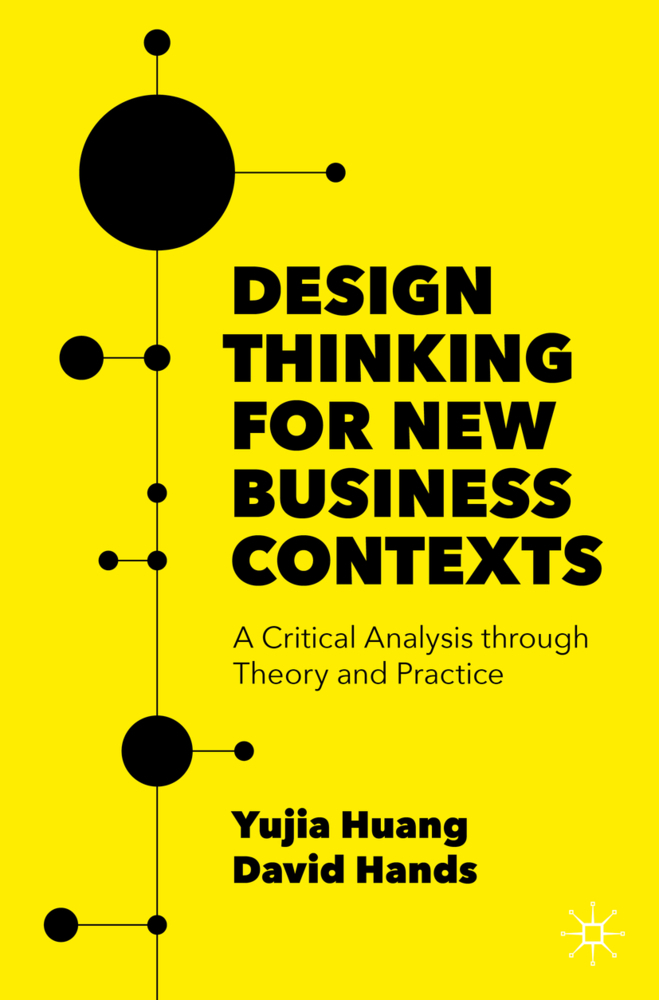Design Thinking for New Business Contexts
Design Thinking for New Business Contexts
This textbook identifies and critically explores the new business landscape through the lens of design thinking and contemporary industry practice, bridging the divide between the design and business domains. The book outlines the evolution of design thinking and the relationship between business and design, as well as provides in-depth studies of design thinking in turbulent business contexts, that includes the themes of sustainability, branding and organisational innovation. At its core, it articulates that design thinking is vital to establishing dynamic interdisciplinary thinking models that lead to organizational innovation. Featuring case studies and learning tasks, the book presents design thinking for readers as an organisational philosophy as opposed to a simple problem-solving tool.
1 Introduction
1.1 Introduction
1.2 Background to Design Thinking for new Business Contexts
1.3 Structure of Content
1.4 Using the Book: A Reader's Guide
2 Evolution of the Relationship Between Design and Business Activities
2.1 Introduction
2.2 Design Thinking and Design[ing]
2.3 Design Thinking and Business Planning Activities
2.4 Design Thinking and Business Strategy
2.5 Design Thinking in SMES
References
3 Crossing Boundaries: Design into Business and Management
3.1 Introduction
3.2 Design for Business: The Critical Imperative
3.3 Teaching Design in Design Schools.- 3.4 Teaching Business Management in Business Schools
3.5 Academia and Industry: Design Alliances
References
4 Organisational Complexity and Change by Design
4.1 Introduction
4.2 Managing Complexity and theOrganisation.- 4.3 Managing Uncertainty in Unpredictable Times
4.4 Organisational Change Management
4.5 A Designerly Approach to Organisational Change
References.- 5 Business Thinking Through Design
5.1 Introduction
5.2 Economic Systems that Shape Business Environments
5.3 New Economic Systems Reshaping the Business Environment
5.4 Types of Organisations
5.5 Business Structures
5.6 Business Composition
5.7 Design Thinking: Tensions and Challenges
References
6 Design Thinking for Sustainable Futures
6.1 Introduction
6.2 Mission Impossible?
6.3 Sustainable Futures
6.4 Corporate Social Responsibility.- 6.5 Social Enterprises-A Hybrid Business Model
References
7 Design Thinking for Branding
7.1 Introduction
7.2 Brand Audit, Consumer Ethnography, and Design Thinking
7.3 Identifying Branding Problems and/or Opportunities
7.4 Design Thinking and the Development of Branding Strategies
References
8 Design Thinking: Practice and Applications
8.1 Introduction
8.2 Design Processes, Methods and Tools
8.3 Case Example 1: Hitachi ABB Power Grids
8.4 Case Example 2: Maas Global
8.5 Understanding the Student Learning Experience Through a Design Methods Approach
References
9 Design Directions and Future Trajectories
9.1 Introduction
9.2 Design Influences and Contested Territories
9.3 Democratic Design
9.4 Data and Design
9.5 Design Directions in an Era of Uncertainty
References
10 Summary
10.1 The Design Nexus: Reflections and Reorganisation
10.2 Design Values
10.3 Design Commonwealth.- 10.4 Design Perspectives
10.5 Design Transformations
10.6 Design Futures.- 10.7 Final Reflections.
| ISBN | 978-3-030-94205-2 |
|---|---|
| Artikelnummer | 9783030942052 |
| Medientyp | Buch |
| Auflage | 1st ed. 2022 |
| Copyrightjahr | 2022 |
| Verlag | Springer, Berlin |
| Umfang | XI, 210 Seiten |
| Abbildungen | XI, 210 p. 32 illus. |
| Sprache | Englisch |











